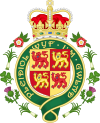Measure of the National Assembly for Wales

A Measure of the National Assembly for Wales (informally, an Assembly Measure) is primary legislation in Wales that is a category lower than an Act of Parliament. In the case of Contemporary Welsh Law, the difference with Acts is that the competence to pass Measures is subject to 'LCOs' or Legislative Competence Order, which transfers powers to the Assembly by amending Schedule 5 of the Government of Wales Act 2006.
It was a lower form of primary legislation as it did not contain a large bulk of powers compared to the power to make acts. In Wales each Assembly Measure had to be accompanied with a Matter which was transferred using the Legislative Competence Order (LCO) system. Each Assembly Measure, like an Act of Parliament, would had to have made provision for a matter within the remit of the legislative competency of the Assembly.
Following a referendum held in 2011, the assembly gained powers to make primary legislation known as Acts of the Assembly. These powers came into force after the 2011 assembly elections and the assembly is no longer able to pass Measures. Existing measures will remain valid unless repealed by the assembly in the future.[2][3]
How an Assembly Measure was made
| This article is part of a series within the Politics of the United Kingdom on the |
| Politics of Wales |
|---|
 |
Consideration by the Assembly
Like Acts, Assembly Measures face the same style of scrutiny. There were around four stages where the proposed legislation was scrutinised.[4] The first stage is the agreement of the principles of the Assembly Measure, which means the first approval of the legislation for it to be scrutinised, then it will have to be scrutinized at committee level, where a committee of Assembly Members can debate and add more to the Measure which is then accompanied with debates in 'plenary', which would be required to approve the amendments.
Once everything above has been completed, the Assembly can then start the final scrutinising before the Assembly Measure gets passed and becomes law. Of course, like in other legisative systems, some laws will fail, or might end up withdrawn.[5]
Royal Approval
Assembly Measures like all other types of legislation will have to be approved by a head of state, that head of state would be the Queen of the United Kingdom. After the Assembly Measure is passed by the National Assembly for Wales the Measure will have to be taken to the Queen in Council who approves the Measure via an Order In Council. The approval would later be added to the Assembly Measure as proof of the approval. The approving order in council is not approved by both Houses of Parliament like the Orders in Council conferring power to the Assembly.
Who could propose Assembly Measures
Like in any legislature, the National Assembly for Wales members can propose Assembly Measures. The name for an Assembly Measure proposed by a person not in the Welsh Assembly Government will be called a "Members Proposed Assembly Measure" [6] Meanwhile according to the same source there will also be "Government Proposed Assembly Measures" and "Emergency Proposed Assembly Measures". The First Welsh Legislative Counsel, a new post which commenced April 2007, working within the Office of the First Welsh Legislative Counsel, part of the Legal Services Department of the Welsh Assembly Government has responsibility for the drafting of the Welsh Assembly Government's legislative programme following the implementation of the Government of Wales Act 2006. Professor Thomas Glyn Watkin is the first person to be appointed to this post.
Enacting formula
Assembly measures begin with the following enacting formula:
- English: "This Measure, passed by the National Assembly for Wales on [Date] and approved by Her Majesty in Council on [Date], enacts the following provisions:-"
- Welsh: "Mae'r Mesur hwn, a basiwyd gan Gynulliad Cenedlaethol Cymru ar [Dyddiad] ac a gymeradwywyd gan Ei Mawrhydi yn ei Chyngor ar [Dyddiad], yn deddfu'r darpariaethau a ganlyn:-"
Confusion
When the Government of Wales Act 2006 was passed, some people reading it became confused as to what the difference between an Assembly Measure and an Order-in-Council is. Some people thought that the Order-in-Council was just a way of conferring power to the Assembly so the Assembly could make more 'delegated legislation'. However, the Act states that the Orders in Council are used only to transfer legal power to the Assembly. In this way, the Assembly, without having to go to Parliament, could then legislate using the 'Assembly Measures' system instead of making Acts straight off. An Assembly Measure could then confer power to the Welsh ministers to make delegated legislation, or statutory instruments as guided within the Measure.
See also
- NHS Redress (Wales) Measure 2008: an instance of Assembly Measures
- List of Acts and Measures of the National Assembly for Wales
- Act of the National Assembly for Wales
References
- ^ "First Welsh law's royal approval". BBC. 9 July 2008.
- ^ http://www.bbc.co.uk/news/uk-wales-politics-12639379
- ^ http://www.assemblywales.org/gethome/vote2011/get_involved-referendum.htm
- ^ National Assembly for Wales | Measures in Progress
- ^ National Assembly for Wales | Measures Rejected or Withdrawn
- ^ http://www.walesoffice.gov.uk/2007/leg_SO_March2007.pdf
